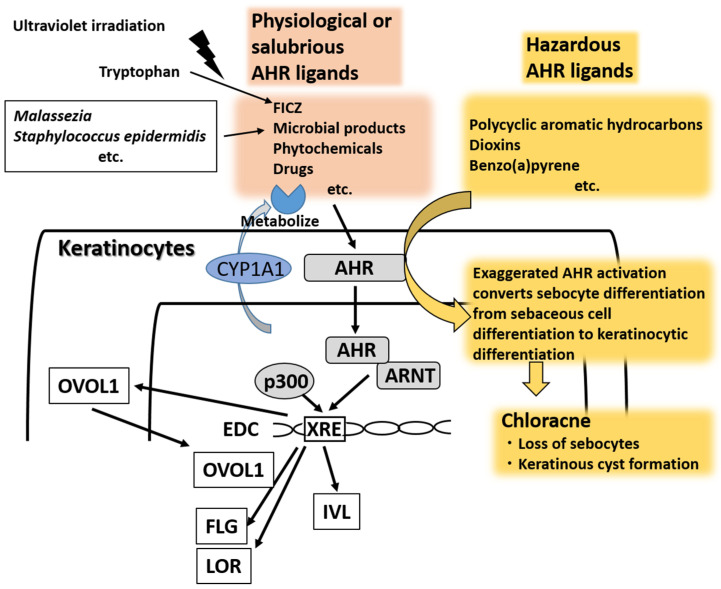Figure 2.
There are many physiological or salubrious aryl hydrocarbon receptor (AHR) ligands such as tryptophan photoproduct 6-formylindolo [3,2-b] carbazole (FICZ), microbial products from Malassezia and Staphylococcus epidermidis, phytochemicals and drugs. AHR activated by ligands translocates into the nucleus and is heterodimerized with AHR-nuclear translocator (ARNT). The ligand–AHR–ARNT complex binds XRE regions with p300 cofactor and upregulates the transcription of target genes and associated protein expression, including for CYP1A1, OVOL1, filaggrin (FLG), loricrin (LOR), and involucrin (IVL). Cytoplasmic OVOL1 translocates into the nucleus and contributes to the upregulation of FLG and LOR, but not that of IVL. The effects of physiological or salubrious AHR ligands are transient because they are rapidly metabolized or degraded by CYP1A1. In contrast, hazardous AHR ligands such as polycyclic aromatic hydrocarbons, dioxins and benzo(a)pyrene are stable and long-lasting in the body because they are not easily metabolized by CYP1A1. The exaggerated AHR activation converts sebocyte differentiation from sebaceous cell differentiation to keratinocytic differentiation. This results in chloracne characterized by the loss of sebocytes and keratinous cyst formation. FICZ, 6-formylindolo [3,2-b] carbazole; XRE, xenobiotic responsive element.

